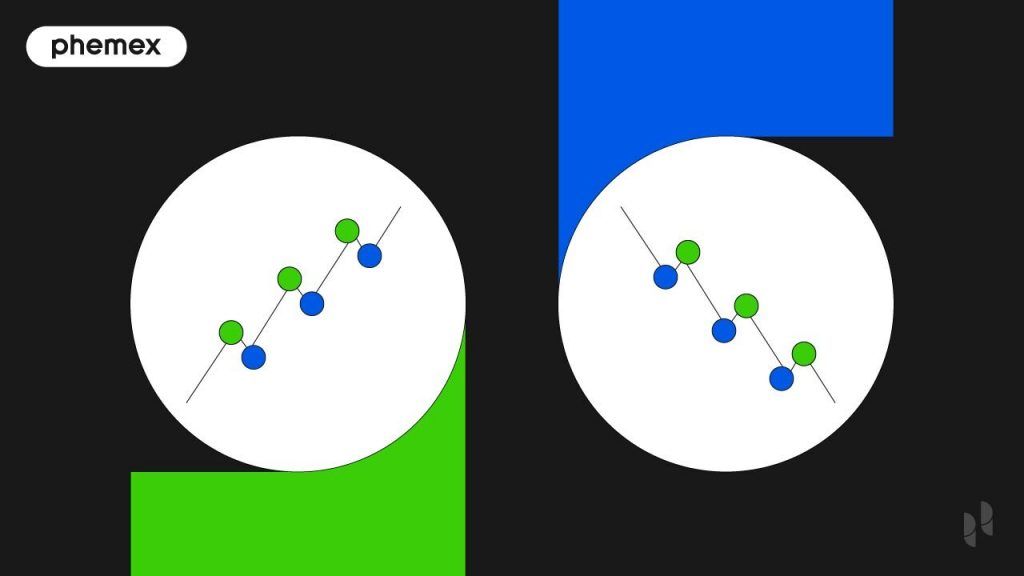Non-lagging indicators, also known as leading indicators, are powerful tools for crypto traders seeking real-time insights to predict price movements. These indicators help analyze critical market components—trend, momentum, volume, and divergence—enabling traders to make informed decisions. In this 2025 guide, we explore the top five non-lagging indicators optimized for Bitcoin, Ethereum, and altcoins, designed to enhance your trading strategy and drive profitable trades.

Lagging vs. Non-Lagging Indicators: What’s the Difference?
Mastering the difference between lagging and non-lagging indicators is crucial for effective crypto trading. Here’s a clear breakdown:
-
Lagging Indicators:
-
What They Are: Confirm trends after they start, using historical data for accuracy.
-
Examples: Moving Averages (MA), Relative Strength Index (RSI).
-
How They Work: A 50-day MA smooths price data, signaling a trend after it’s established, e.g., confirming a BTC uptrend after a breakout.
-
Best For: Long-term strategies like swing or position trading, where reliability trumps speed.
-
Example: RSI at 70 confirms an overbought market, signaling a potential BTC reversal after sustained gains.
-
-
Non-Lagging Indicators:
-
What They Are: Deliver real-time signals as trends form, reacting to price shifts instantly.
-
Examples: Stochastic RSI, Williams Alligator.
-
How They Work: A Stochastic RSI crossover on a 1-hour chart signals a bullish ETH trend at its onset, enabling early entries.
-
Trade-Off: Sensitivity can lead to false signals, so confirm with lagging indicators.
-
Best For: Day trading or scalping in crypto’s volatile markets.
-
-
Why Combine Both?:
-
Balanced Strategy: Lagging indicators validate long-term trends; non-lagging indicators time entries/exits.
-
Practical Example: Use RSI to confirm a BTC uptrend on a daily chart, then use True Strength Index (TSI) on a 4-hour chart to enter trades.
-
Benefit: Maximizes profits while minimizing risks in fast-moving markets.
-
Key Benefits of Non-Lagging Indicators
-
Real-Time Signals: Act on trends as they form, ideal for day trading.
-
Versatility: Works across BTC, ETH, and 500+ altcoins on platforms like Phemex.
-
Customizable: Adjust settings to match your trading style, whether scalping or swing trading.
Getting Started with Crypto Trading
New to crypto trading? Follow these steps:
-
Sign Up: Create a free account on Phemex and claim a welcome bonus.
-
Practice: Use Phemex’s testnet to paper trade with simulated funds.
-
Deposit Crypto: Fund your wallet to start trading with real assets. Learn more about spot trading and contract trading on Phemex for advanced strategies.
Top 5 Non-Lagging Indicators for Crypto Trading in 2025
These handpicked leading indicators are optimized for accuracy, speed, and compatibility with modern crypto markets. Each indicator leverages price, volume, or momentum to deliver actionable signals.
1. True Strength Index (TSI)
The True Strength Index (TSI) is a versatile momentum oscillator that combines trend analysis, overbought/oversold signals, and divergence trading. Built on three Exponential Moving Averages (EMAs), TSI emphasizes recent price data for faster signals.
-
How It Works: A buy signal occurs when the 25-EMA (blue line) crosses above the 13-EMA (red line), indicating bullish momentum. A sell signal triggers when the red line crosses above the blue.
-
Why It’s Effective: TSI’s smoothing reduces volatility, providing reliable signals for BTC and ETH trends.
-
Use Case: Combine with RSI for divergence trading or use standalone for day trading.
2. Fisher Transform (FT)
The Fisher Transform (FT) converts price data into a Gaussian distribution, offering clear buy/sell signals through its two lines: Fisher (blue) and Trigger (orange).
-
How It Works: A bullish signal occurs when the Fisher line crosses above the Trigger line, suggesting an uptrend. A bearish signal triggers when the Trigger line crosses above the Fisher line.
-
Why It’s Effective: Its range-bound nature highlights overbought (>1.5) and oversold (<-1.5) levels, ideal for scalping or swing trading.
-
Use Case: Use for short-term trades on volatile altcoins.

3. Pivot Points (PP)
Pivot Points (PP) are a day trader’s go-to, providing dynamic support and resistance levels based on high, low, and closing price averages. The indicator calculates a central pivot point (P) and multiple support (S1, S2) and resistance (R1, R2) levels to guide trading decisions.
-
How It Works: The central pivot point (P) acts as a baseline, calculated as (High + Low + Close) / 3. Resistance levels (R1, R2) indicate where price may reverse downward, while support levels (S1, S2) show where price is likely to hold. Buy at S1 or S2, sell at R1 or R2, and set stop-losses near S levels and take-profits near R levels.
-
Why It’s Effective: Focuses purely on price action, making it ideal for automated trading bots and fast-paced crypto markets.
-
Use Case: Perfect for intraday trading on BTC or ETH during high-volatility periods, such as after major market news.
4. Stochastic RSI (StochRSI)
The Stochastic RSI (StochRSI) is a hyper-sensitive momentum indicator that oscillates between overbought (>80) and oversold (<20) levels faster than the traditional RSI. The K line (blue) and D line (orange) help identify trading signals.
-
How It Works: Open a long trade when the K line (blue) crosses above the D line (orange) in oversold territory (<20). Open a short trade when the K line crosses below the D line in overbought territory (>80).
-
Why It’s Effective: Its sensitivity makes it ideal for catching early reversals in fast-moving markets.
-
Use Case: Use for divergence trading on altcoins, but confirm signals with RSI to avoid false positives.

5. Williams Alligator (WA)
The Williams Alligator (WA) is a triple Simple Moving Average (SMA) indicator that signals trending and sideways markets using three lines: Jaw (blue), Teeth (red), and Lips (green).
-
How It Works: A trending market is signaled when lines diverge (open mouth), with a buy signal when Lips cross above Teeth and Jaw, and a sell signal when Jaw crosses above others. A sideways market occurs when lines converge (closed mouth).
-
Why It’s Effective: Filters out choppy markets, reducing false signals and focusing on strong trends.
-
Use Case: Ideal for swing trading BTC or ETH during trending market phases.

How to Use Non-Lagging Indicators Effectively
-
Mix Indicators: Combine TSI or StochRSI with RSI or MA to confirm trends.
-
Manage Risk: Set stop-losses and take-profits to protect against false signals.
-
Test Strategies: Use Phemex’s testnet to refine settings for your style.
-
Stay Informed: Monitor 2025 crypto trends, as BTC and ETH volatility impacts performance.
Conclusion
Non-lagging indicators like TSI, Fisher Transform, Pivot Points, StochRSI, and Williams Alligator give traders a real-time edge in crypto’s dynamic markets. While lagging indicators offer long-term stability, leading indicators shine for short-term wins. Combine these tools, practice on Phemex, and explore their technical analysis section to dominate 2025’s markets.










